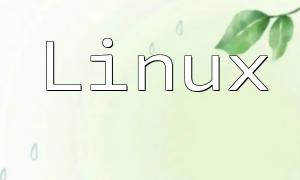Databases are a core component in website development. PHP and CGI are two popular technologies, each with different database connection methods and performance optimization tips. This article will introduce common database connection methods in both PHP and CGI and share some common performance optimization strategies.
In PHP, the most common database connection methods are the MySQLi and PDO extensions.
The MySQLi extension in PHP is a method for working with MySQL databases, supporting both object-oriented and procedural programming approaches. Here’s a simple example of connecting to a database using MySQLi:
<?php
$servername = "localhost";
$username = "username";
$password = "password";
$dbname = "database";
// Create connection
$conn = new mysqli($servername, $username, $password, $dbname);
// Check if connection is successful
if ($conn->connect_error) {
die("Connection failed: " . $conn->connect_error);
}
echo "Connected successfully";
?>
PDO (PHP Data Objects) is a database abstraction layer that supports multiple database types. Here’s an example of how to use the PDO extension to connect to a database:
<?php
$servername = "localhost";
$username = "username";
$password = "password";
$dbname = "database";
try {
$conn = new PDO("mysql:host=$servername;dbname=$dbname", $username, $password);
$conn->setAttribute(PDO::ATTR_ERRMODE, PDO::ERRMODE_EXCEPTION);
echo "Connected successfully";
} catch (PDOException $e) {
echo "Connection failed: " . $e->getMessage();
}
?>
CGI (Common Gateway Interface) is a technology used to generate web pages, and it can use different programming languages to handle database connections. Here's an example using Perl to connect to a MySQL database via CGI:
#!/usr/bin/perl
use strict;
use warnings;
use DBI;
my $host = "localhost";
my $database = "database";
my $username = "username";
my $password = "password";
my $dbh = DBI->connect("DBI:mysql:database=$database;host=$host", $username, $password) or die "Unable to connect to the database";
print "Connection successful";
$dbh->disconnect();
Using efficient database connection methods is key to improving website performance. Here are some common performance optimization tips:
Connecting to a database is a time-consuming operation. Connection pooling reduces the overhead of establishing a new connection by reusing existing connections, which enhances performance.
When performing many SQL operations, batch processing reduces the number of database connections and improves performance. For example, using the INSERT statement to insert multiple rows of data at once.
Creating appropriate indexes in the database significantly speeds up query execution. Optimizing SQL queries to avoid unnecessary operations also improves performance.
Using caching tools like Redis or Memcached reduces the number of database queries, improving performance. Caching frequent queries or page fragments can relieve pressure on the database.
This article discussed PHP and CGI database connection methods and common performance optimization tips. By choosing the right connection method and applying optimization strategies, developers can significantly improve website response times and user experience.









